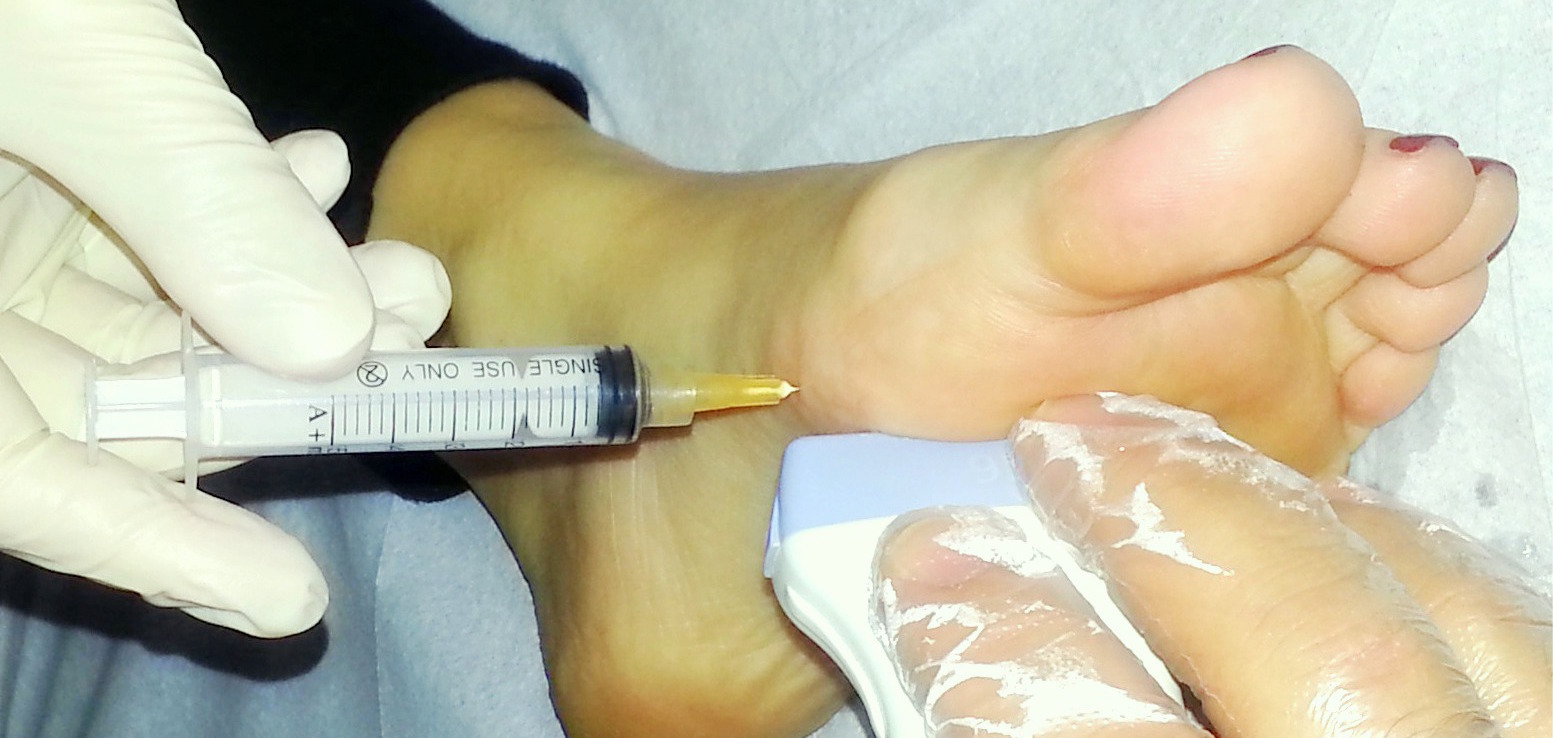
Περίληψη της εργασίας που θα παρουσιαστεί στο Annual Meeting της American Orthopaedic Foot and Ankle Society
Ultrasound-guided injectionsin the treatment of stress fractures of the hallucal sesamoids
Stress fractures of the hallucalsesamoids can be difficult to treat. A number of these fractures will never achieve union but rather an asymptomatic non-union. Their non-operative management includes the use of a toe plate or an ankle boot or plaster, and a partial or non weight bearing status followed by some type of insole orthotic.
Further management in symptomatic cases remains controversial. A prolonged period of non weight bearing does not have predictable results and has to be weighed against the adverse effects of immobilization. Surgical options include partial or complete sesamoidectomy, sesamoid shaving and bone grafting of the non union, all of which have had mixed reported results. The purpose of the current study is to present a novel approach for sesamoid fractures, in cases where initial non operative management has failed. The rationale of the treatment is to convert a symptomatic non union to an asymptomatic one.
The intervention involves a selective, ultrasound-guided injection of betamethasone sodium phosphate and betamethasone acetate into the fracture site. The injection is performed under local anaesthesia and ultrasound imaging which allows for accurate placement of the needle. The patient is allowed to return to activities as pain allows in two days. In recalcitrant cases the injection may be repeated once using the same technique and agent.
Eleven patients (5 male, 6 females, aged 18 to 46, av. age 33) with a single stress fracture (5 right and 6 left feet, 8 tibial and 3 fibular sesamoid fractures) were treated with the method. All fractures were diagnosed with plain radiographs and/or CT and MRI depending on the patient’s history and symptoms. Duration of symptoms prior to the injection was on average 10 months (3 to 28 months). In three patients a second injection was performed within three months after the first. Patients were evaluated with a VAS scale for pain and the AOFASHallux Metatarsophalangeal-lnterphalangeal Scale and Foot Function Index (FFI) scores. Follow up scoring was conducted by an independent observer who was not involved in the patients’ management.
All but one patient had improvement in their scores. Follow up period was 9.8 months (range: 6 to 14 months) after the last intervention (either single or second injection). Average VAS scores improved from 6.5 to 2.7 (p=0.00015), AOFAS from 68.6 to 88.2 (p=0.00081) and FFI from 54.9 to 12.3 (p=0.00016). There were no major adverse effects as a result of the injection(s). At last follow up, four patients still use insole orthotics for their daily activities. The patient who showed no improvement had a comminuted fibular sesamoid fracture and is scheduled for operative treatment.
Ultrasound guided betamethasone injections seem to be a safe and effective alternative in the treatment of sesamoid stress fractures. The modality can be used as a bridge between conventional non operative management and operative treatment with satisfactory results.

